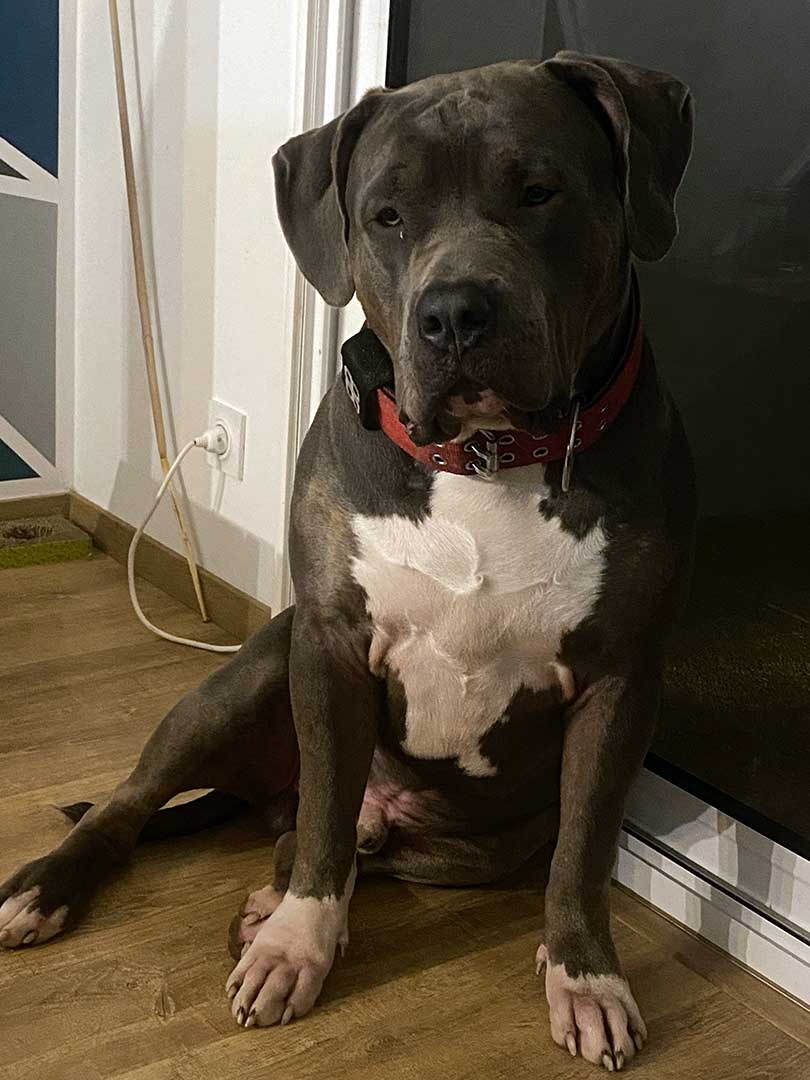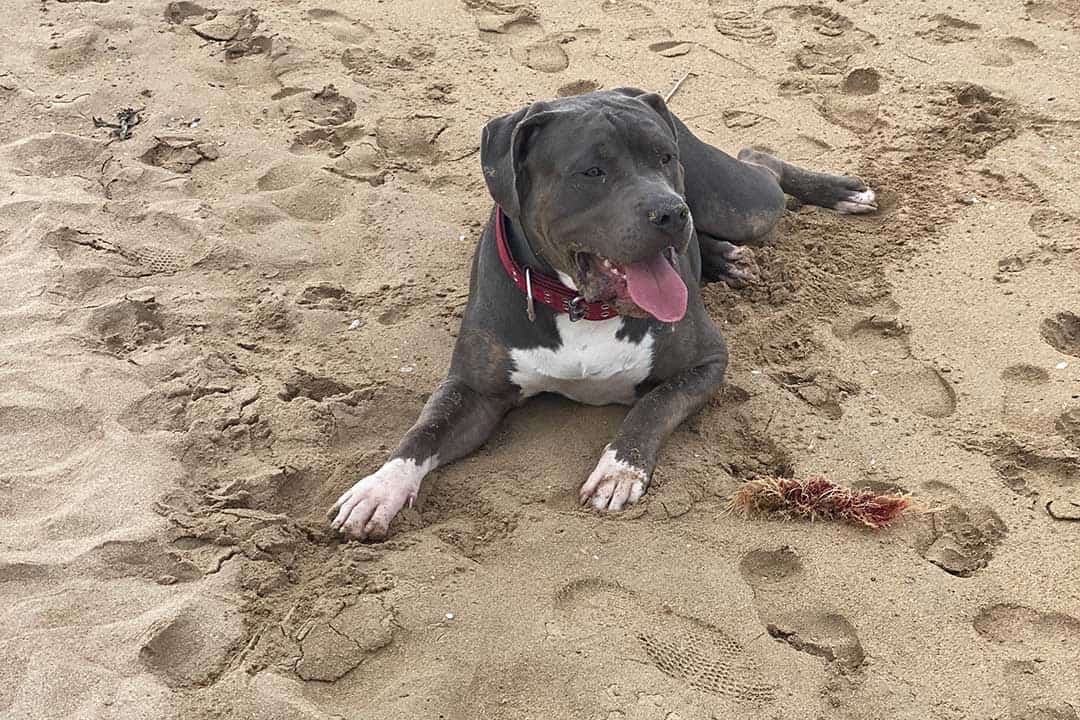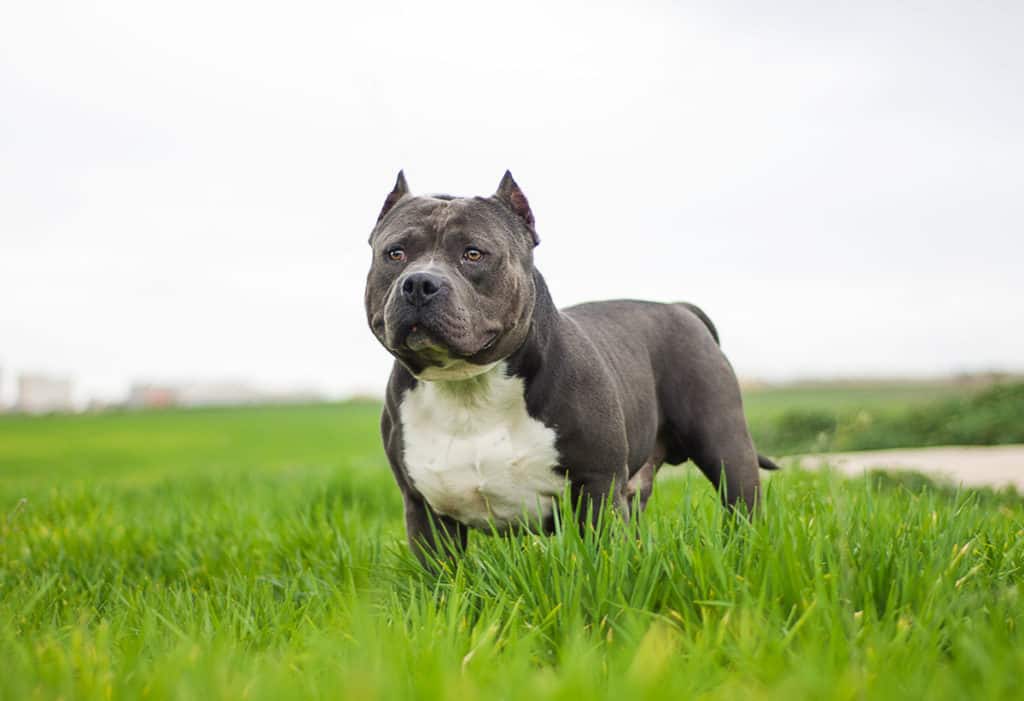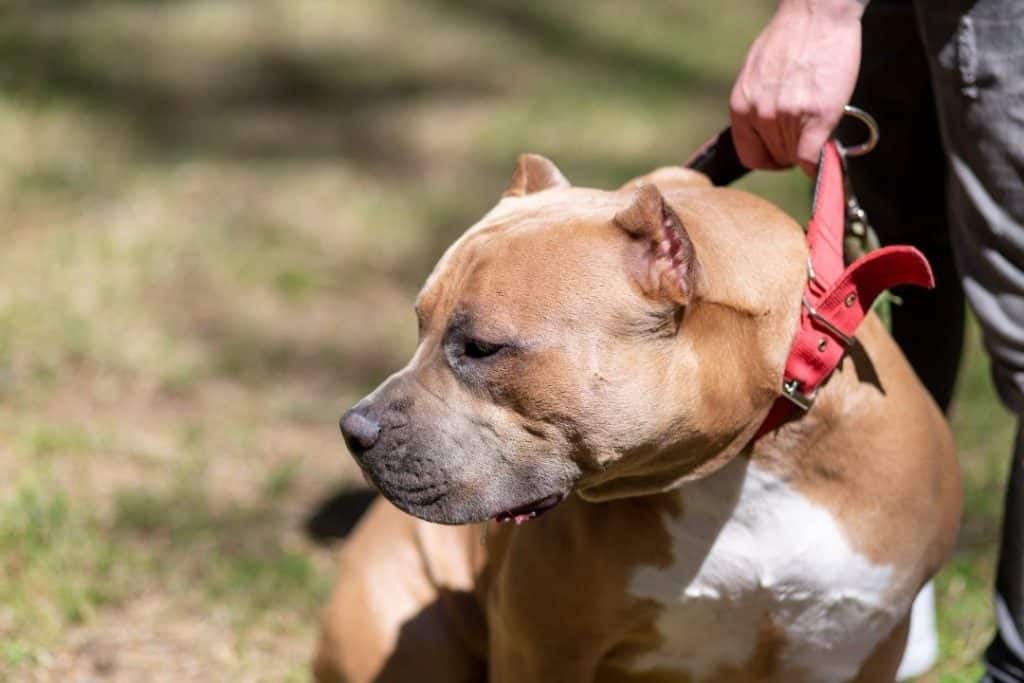This article may contain affiliate links, and I will be compensated if you make a purchase after clicking on my links (at no additional cost to you)
An American Bully dog’s muscular and tough demeanor can sometimes make owners feel like constant barking is a norm for the breed. However, as the owner of an XL Bully, I know these dogs shouldn’t bark a lot. If you own one of these and they bark regularly, you should take time to figure out why this is the case.
Your American Bully will bark for several reasons, but chief among them are situations that trigger their protective or territorial behavior, as well as boredom. However, you can train your dog to assess situations better and limit the number of times he defaults to barking.
In this article, I’ll cover five possible reasons why your American Bully barks. I’ll also explain how you should deal with each of these situations so that you can limit your dog’s barking to the barest minimum.
The 5 Reasons Why an American Bully Barks
American Bullies have a deep, wall-shaking bark. However, as I mentioned above, it’s not in their character to bark excessively.
These dogs are eager to please their owners and are easy to train. That said, they won’t hesitate to promote themselves to the pack leader in your home if they sense weakness and a lack of firmness in training. When that happens, they’ll bark at anything and everything, so training them correctly is essential.
However, a well-trained American will only bark for a few reasons, including the following:
1. Your Dog Is Being Protective or Territorial Behavior
If there’s an intruder in your home or a dangerous situation, your Bully Dog will bark while swinging into action to protect the family. The same applies if they see prey or a trespassing animal they’re not used to seeing around your home – and it will be even worse if it’s another dog. Once the assumed threat has passed, your dog should stop barking.
2. Your Dog Is Lonely or Bored
Your American Bully will bark if you’ve left him alone for too long. They’ll start to feel bored and sad and will resort to barking because they’re unhappy and need some attention.

Don’t forget that dogs are generally pack animals and don’t do too well with being left alone for long periods. This is especially true for breeds like the American Bully. If you leave your American Bully alone all day while you’re at work, you shouldn’t be surprised if they bark frequently.
3. Your Dog Is Afraid or Surprised
Your American Bully will bark if something startles them or makes them afraid. If you hear persistent barking coming from your dog, take a look at their demeanor, and check to see if they’re surprised or afraid. If they are, they’ll tuck in their tail as they barks.
Look around, and you’ll likely be able to determine what’s causing (or caused) the commotion. Your dog will also bark once others around them start barking. It’s the innate pack behavior in them showing. They’re wired to hunt things with other dogs, so if another dog reacts to a perceived threat, your pet will respond as well.
4. Your Dog Is Excited or Being Playful
Your American Bully dog will bark when greeting other animals they don’t see as a threat or other people. The bark is out of excitement, but in my experience, not many people can see the excitement. Try telling someone seeing an XL Bully for the first time that the bark is a happy one and see how they take it!

5. Your Dog Has Separation Anxiety
An American Bully living with separation anxiety will frequently bark when you leave them alone for some time. Some symptoms that can accompany the anxiety include destructiveness, pacing, depression, and waste elimination in the wrong places. If your dog barks frequently and exhibits some or all of the symptoms above, the problem won’t go away on its own, and you’ll need to treat the separation anxiety first.
6. Your Dog Has a Compulsive Barking Behavior
An American Bully living with a compulsive barking disorder will bark just because they love the sound of their voice. A common sign of this behavior is that the dog will make repetitive movements while barking. So, if your American Bully is barking while running around the room, they’re exhibiting compulsive barking.
How To Correct Excessive Barking in Your American Bully
Correcting excessive barking in your American Bully will take a bit of practice, consistency, and patience. You also need to isolate the cause of the barking and address it.
When dealing with the problem, be sure to avoid shouting. Your dog is likely to interpret shouting as you joining the barking frenzy. Instead, you should spend time training your dog to understand the “Quiet” command rather than simply yelling at them to keep shut.
Here is how to approach each of the different reasons for your American Bully barking excessively.
Correcting Barking Caused By Territorial or Protective Reasons and Barking Caused By Fear and Surprise
As mentioned above, this type of barking happens when your dog perceives a threat to their family or territory. You can solve the problem by limiting the dog’s range of vision.
If you live in a yard, use solid structures they can’t see through for your fence. If your dog is mostly indoors, you can put mechanisms in place to keep them from seeing through doors and windows. A good tip is to cover see-through surfaces like windows with an opaque film.
This approach can also work when you’re solving the problem of barking caused by fear or surprise. By limiting what the dog can see, you can keep them quieter.
Correcting Barking Caused By Loneliness or Boredom
If you have an American Bully that barks excessively while you’re gone, you can solve the problem by ensuring they have more companionship and additional things to do.
When I have to go out for extended periods and can’t take my dog along, I make sure to ask a friend or family member to play with them for at least an hour every day.
However, if you don’t have anyone around you who can help, or are leaving for a long time (such as when you go on vacation for a week or two), consider hiring professional dog walkers or pet sitters or boarding them at a kennel. If you choose to board your pet, make sure to research the facility thoroughly before turning over your pet.
You can also do up your dog’s living area with activities and toys that can keep them busy for hours when there’s no one around. Between the activity and naps, the dog will be less likely to feel bored.
Correcting Barking Caused By Excitement or Playful Behavior
You have to teach your American Bully to stay calm when someone walks in through the gate by training them to stay at a particular spot when the doorbell rings. It’ll take some time, but with lots of treats and by reinforcing positive behavior, you can get them to stay calm when someone walks in.
An important tip to keep in mind here is to maintain discipline when you’re the one coming home. Don’t reward your dog for barking in excitement when you come back home. Otherwise, they’ll continue the behavior with other people.
Correcting Barking Caused By Compulsive Disorder or Anxiety
Barking caused by anxiety or compulsive disorders is harder to treat at home. You’ll need to take your dog to a veterinary behaviorist or similar professional. They’ll recommend drug therapy combined with specialized training to help your dog cope with anxiety and stop resorting to problematic barking.
Final Thoughts
If your American Bully is barking excessively, it shouldn’t be ignored. Apart from noise complaints, ignoring barking can lead to further destructive behavior in the future. Try to figure out why your dog is barking so much and work to correct it so that constant barking doesn’t become routine.
While correcting the behavior, remember to stay firm. Don’t flip flop between discouraging your dog from barking in certain situations and encouraging them to continue in others. Avoid using a muzzle or other barking constraints to keep them quiet for protracted periods when unsupervised – it could lead to serious injuries.

I created this blog to share my passion for bullies, and help current and future pitbull owners with things like diet and education.
Hope you find it useful, don’t hesitate to drop a comment on my articles!



